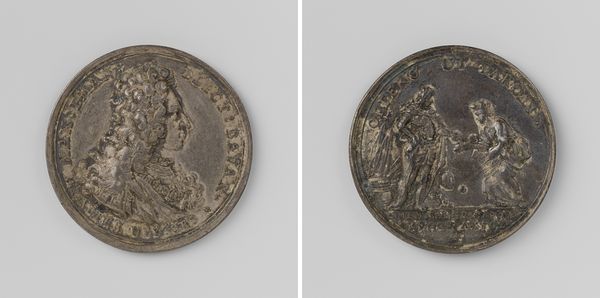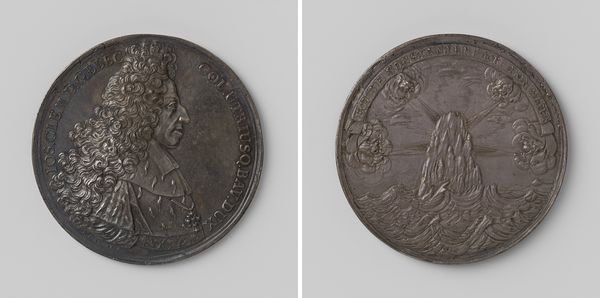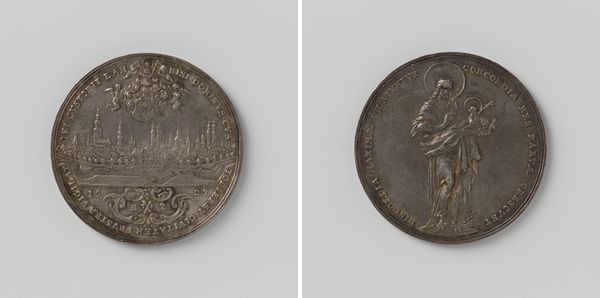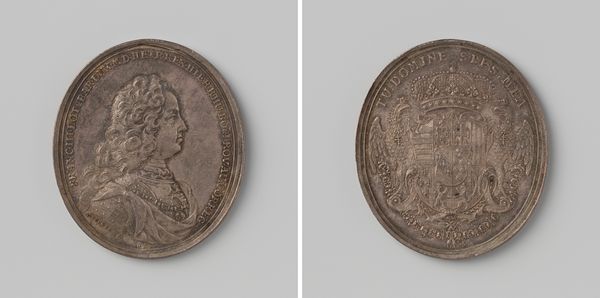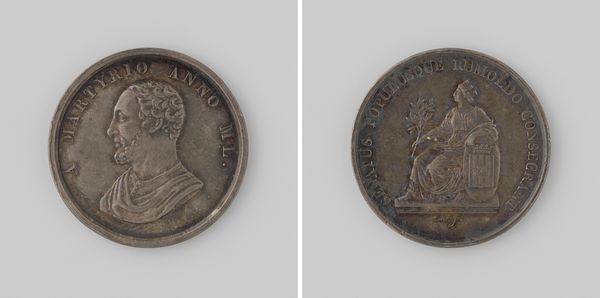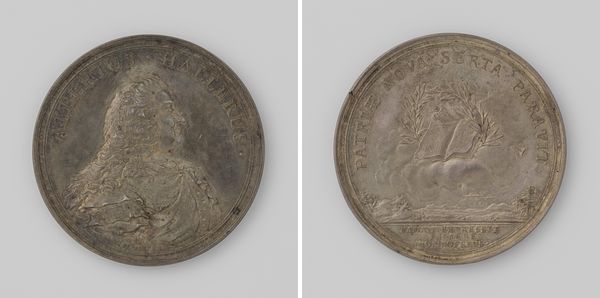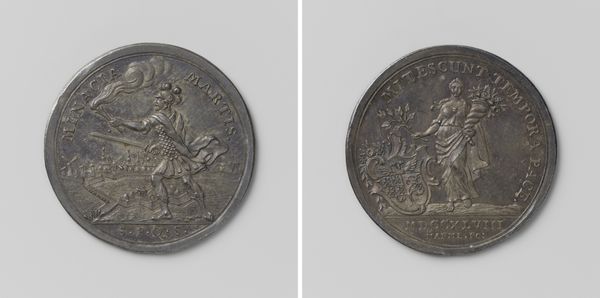
metal, sculpture
#
portrait
#
medal
#
baroque
#
metal
#
sculpture
#
sculpture
#
history-painting
Dimensions: diameter 4.8 cm, weight 57.79 gr
Copyright: Rijks Museum: Open Domain
Curator: We’re looking at a dual portrait here, struck in metal by Anton Meybusch in 1699. The artwork is called "Frederik IV en Louisa, koning en koningin van Denemarken," portraying the King and Queen of Denmark. Editor: Immediately striking—it’s a study in the restrained power of the baroque. The metallic sheen enhances the gravitas, and the stark profiles emphasize their status. Curator: Absolutely. These profiles are deliberately designed to convey power. We see meticulously rendered details in their hair and clothing. The textural contrast is key, from the smooth background fields to the intricate curls and fabric folds. Editor: Notice also the direction they face—a visual suggestion of balance, perhaps of partnership. Each figure is surrounded by inscribed text... it's fascinating how written language and imagery come together to declare authority. Curator: The inscription functions both as a descriptor and an emblem of sovereignty. Consider also the material. Metal, a durable medium, speaks to the timeless ambition that rulers so often crave. Its circular form suggests completion and, indeed, their reign. Editor: Indeed. Circles are enduring symbols in many cultures. The carefully rendered details – the crown and the Queen’s elaborate brooch, become iconic representations, designed to embed themselves in the viewer's memory. This piece serves as cultural propaganda on a miniature scale. Curator: Well said! We can think about this artwork in terms of binaries too. Figure and ground, male and female, inscription and image…Meybusch masterfully controls the visual dynamics. It creates a stable but potent representation. Editor: And I find that consideration allows us a more nuanced appreciation for how portraiture creates cultural legacy through deliberately crafted symbols and the enduring quality of artistic production. Curator: A comprehensive outlook, thank you! It illuminates how formal composition supports ideological projection, which is ultimately very persuasive.
Comments
No comments
Be the first to comment and join the conversation on the ultimate creative platform.

